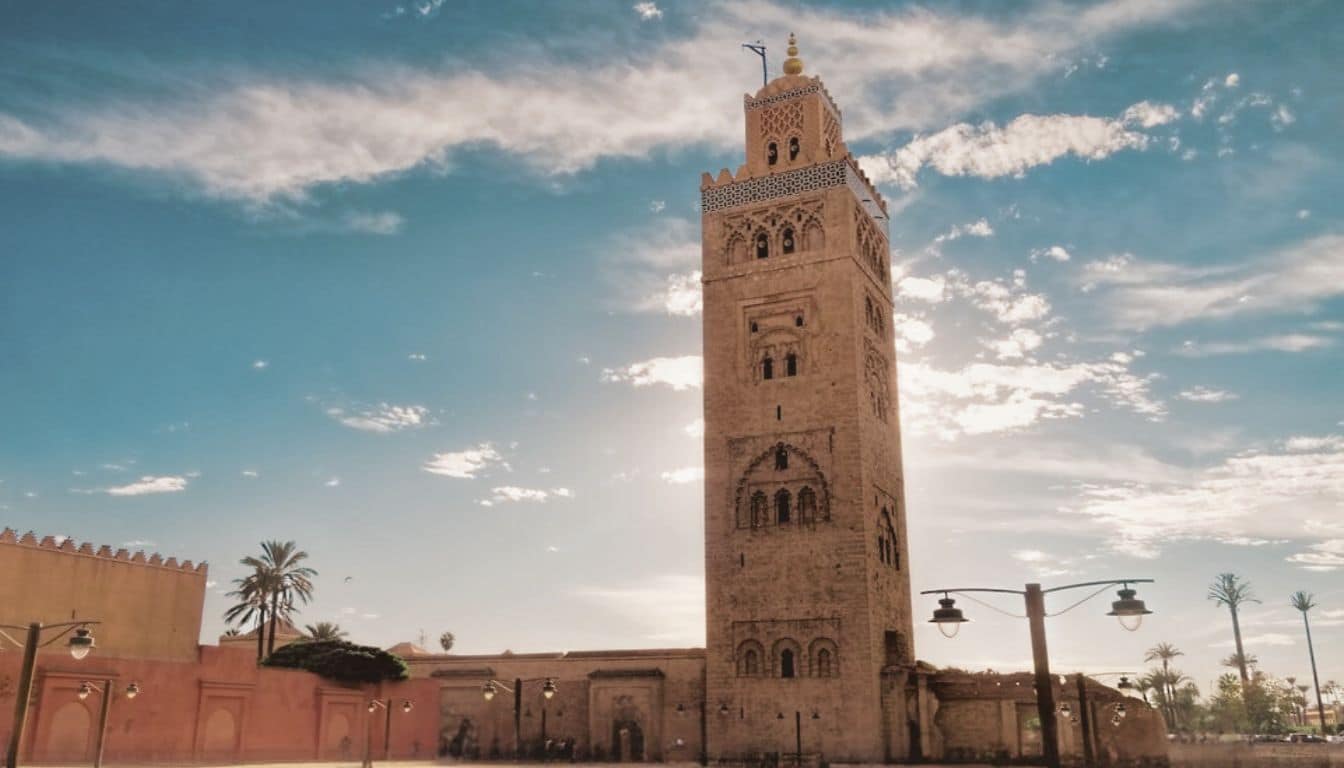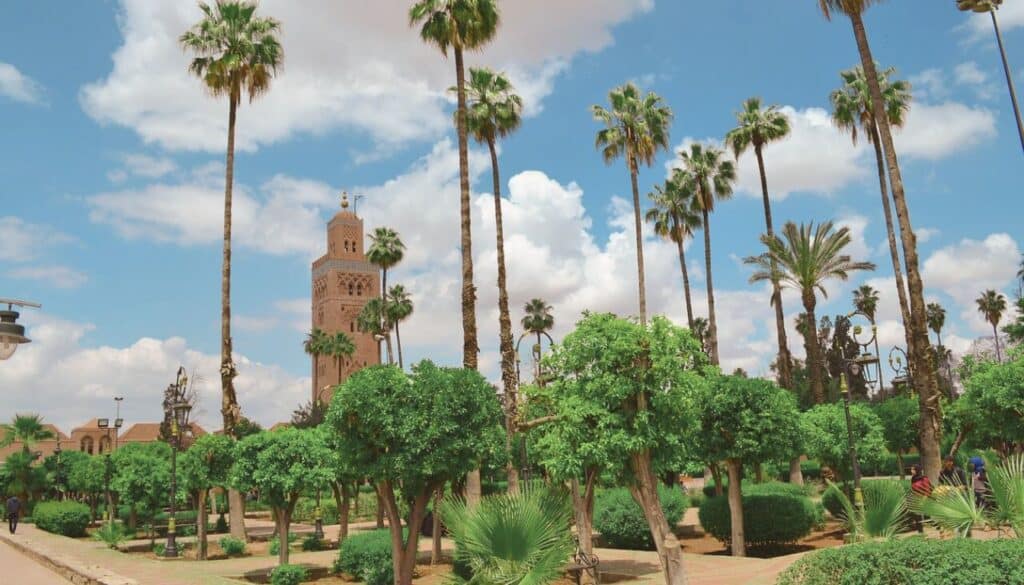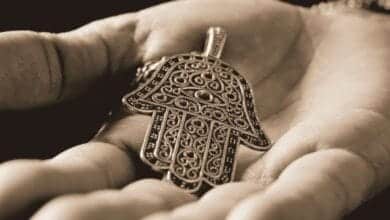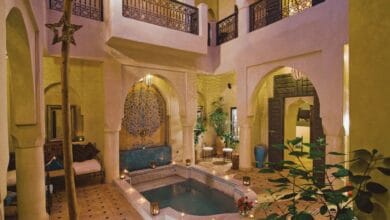
Koutoubia Marrakech: Discover the Emblematic Mosque of the Red City
The construction of Koutoubia began in 1120. It ended in 1199, under Sultan Yacoub el-Mansour, after 79 years. This duration shows the importance of architecture in Morocco.
The Koutoubia minaret rises to 77 meters. It is a major landmark of Marrakech. We can see its summit covered with three copper balls reminiscent of the holy cities of Islam.
La Koutoubia takes its name from the nearby booksellers’ souk. It is the largest mosque in the city. Its design, dating from the Almohads, combines simplicity and beauty with ceramic tiles.
Avenue de la Menara offers a superb view of the Koutoubia . Thus, the monument is a strong symbol of the city. It fascinates architecture enthusiasts and spiritual travelers alike.
History of the Koutoubia Mosque
The history of Koutoubia begins in the 12th century. Abdelmoumen , Almohad sultan, had it built in 1120. He had captured Marrakech and decided to build this holy place. This marked the beginning of the great history of this monument.
The origins and construction of the mosque
The history of the Marrakech mosque ends in 1196. Yacoub El Mansour ruled between 1184 and 1199, saw the construction finished. Known for its Almohad style, the building was opened in September 1158.
The Koutoubia minaret rises to 77 meters, with a lantern on top. It symbolizes classical Islamic art and architecture. Not only has it inspired works like the Giralda of Seville, but it is also part of the cultural heritage of Marrakech.
Visit the Koutoubia Mosque
The Koutoubia Mosque is a jewel of Marrakech. It is important for its religion and architecture. Its impressive minaret attracts many people to see its beauty.
Rules and conventions to respect
Respecting the rules of the mosque is very important. Access to the mosque is limited to Muslims. Non-Muslims can admire its exteriors and the calm of the gardens.

For a respectful visit, you must follow rules. Animals are prohibited. You must also dress appropriately. It is open every day from 9 a.m. to 6 p.m., with free entry.
The best times to discover the mosque
Sunrise and sunset are magical to see when visiting Koutoubia . The light highlights the pink sandstone and the giant minaret. Come early in the morning or late in the evening to enjoy this spectacle.
Located near Jamaa El Fna, the mosque is easily accessible. Take a taxi to get there due to traffic. Plan your visit according to prayers to experience a peaceful time.
Conclusion
The Koutoubia Mosque in Marrakech is much more than just a place of worship. It symbolizes the rich cultural heritage of this Moroccan city. Built by Abd al-Mumin bin Ali in 1146, its 77-meter minaret is impressive.
This building has sixteen naves. Thus, it is one of the largest mosques in the Maghreb. Since its construction, it has inspired many other buildings, such as the Giralda in Seville.
This building is made of limestone from the surrounding hills. The 16 meter square lantern at the top of the minaret shows the beauty of Islamic art. For centuries it has represented the richness and subtlety of this art.
In addition to its incredible architecture, the Koutoubia Mosque is essential to the religious life of Marrakech. During Ramadan, thousands of people gather there for evening prayer, Tarawih.
Before the COVID-19 pandemic, between 20 and 25 people, mainly Westerners, converted each month. They were convinced after participating in one of these prayers.
Even with the pandemic, the Koutoubia Mosque remains important. Indeed, despite the temporary closure in March and the curfew during Ramadan, it fascinates. It continues to symbolize Marrakech and its rich spiritual and cultural heritage.
Thus, the Koutoubia Mosque is more than just a monument. It is an iconic place. It is a symbol of faith and unity in Marrakech, a city dear to the hearts of its inhabitants and visitors.




